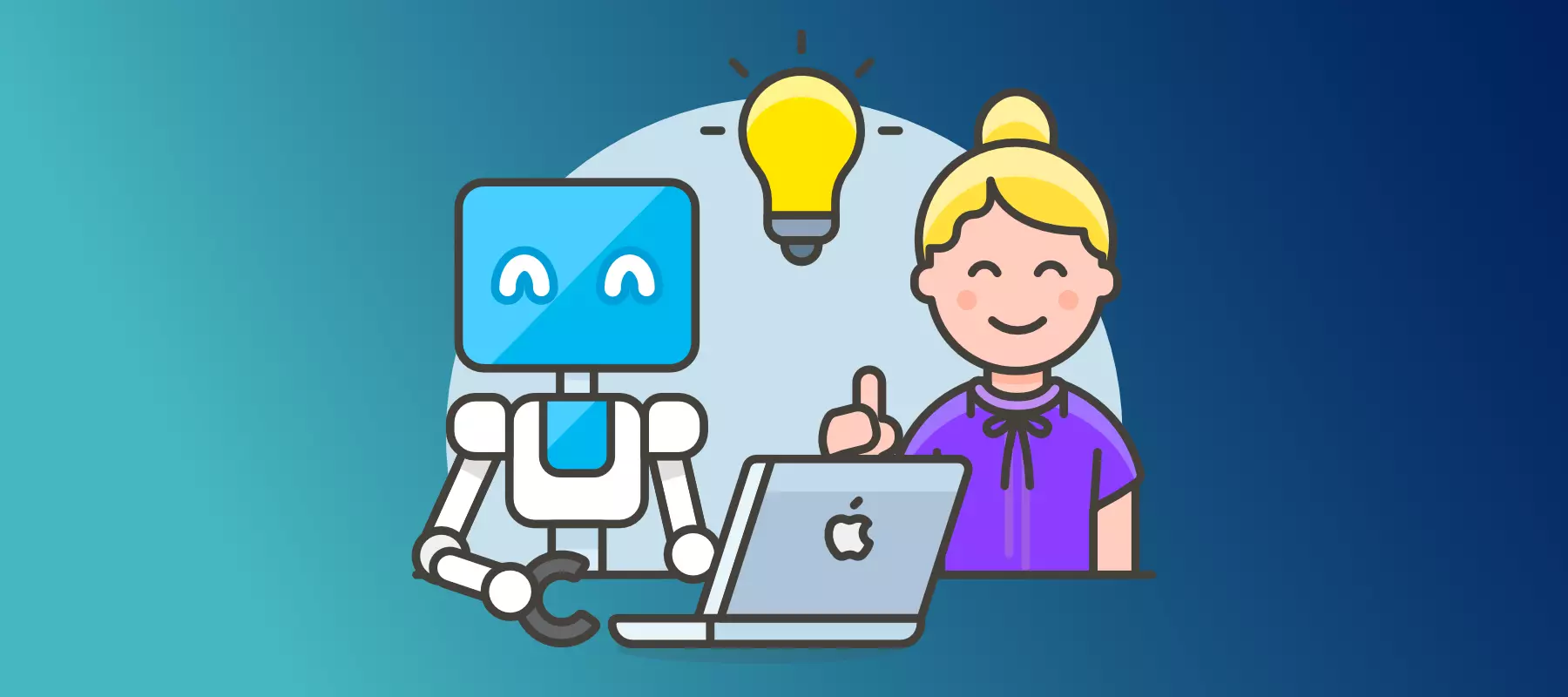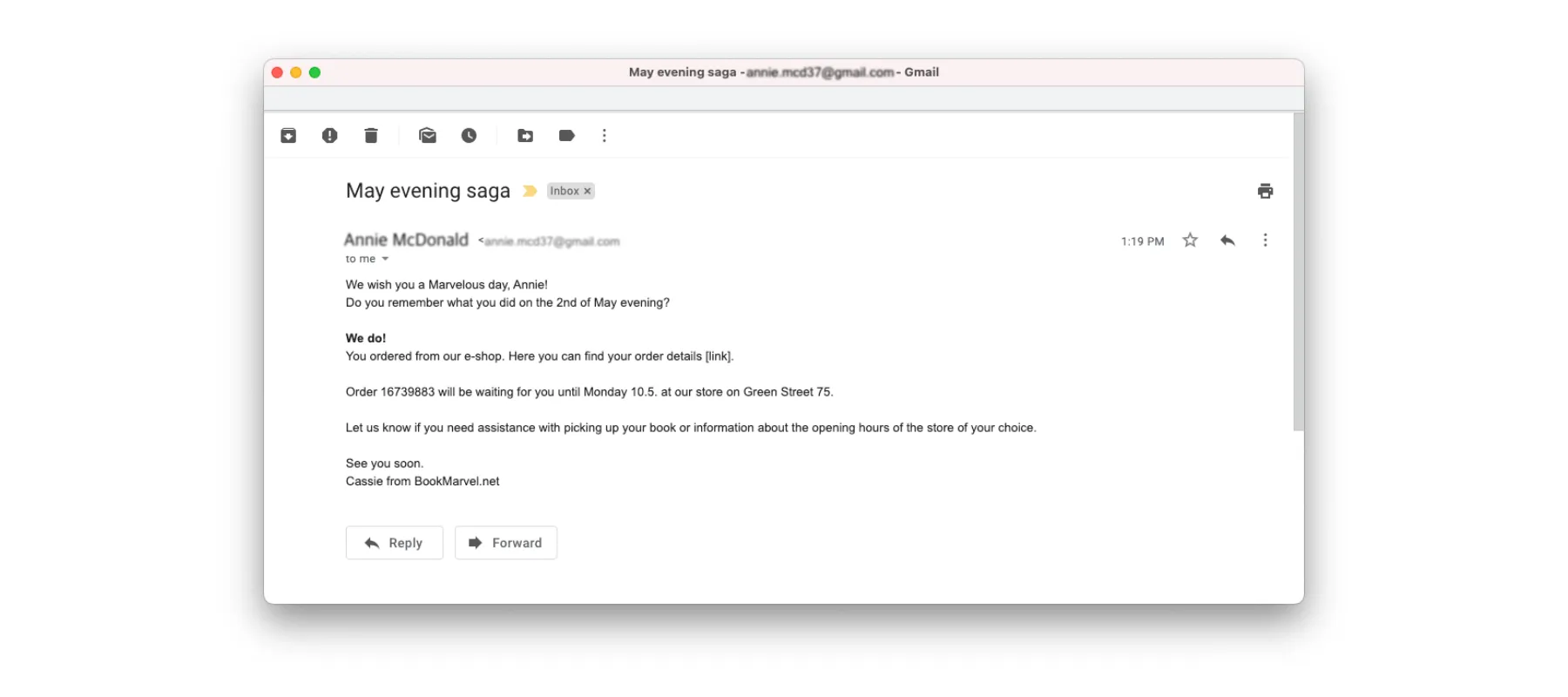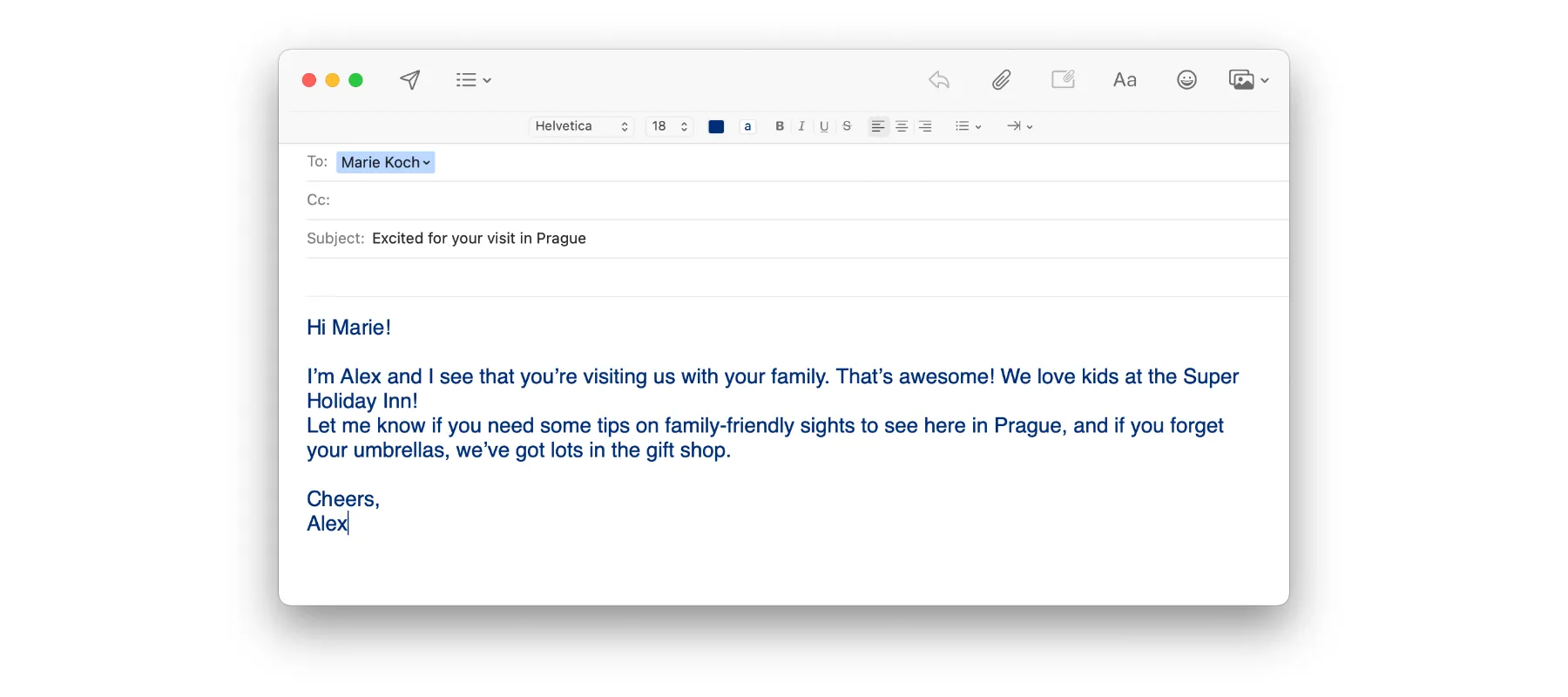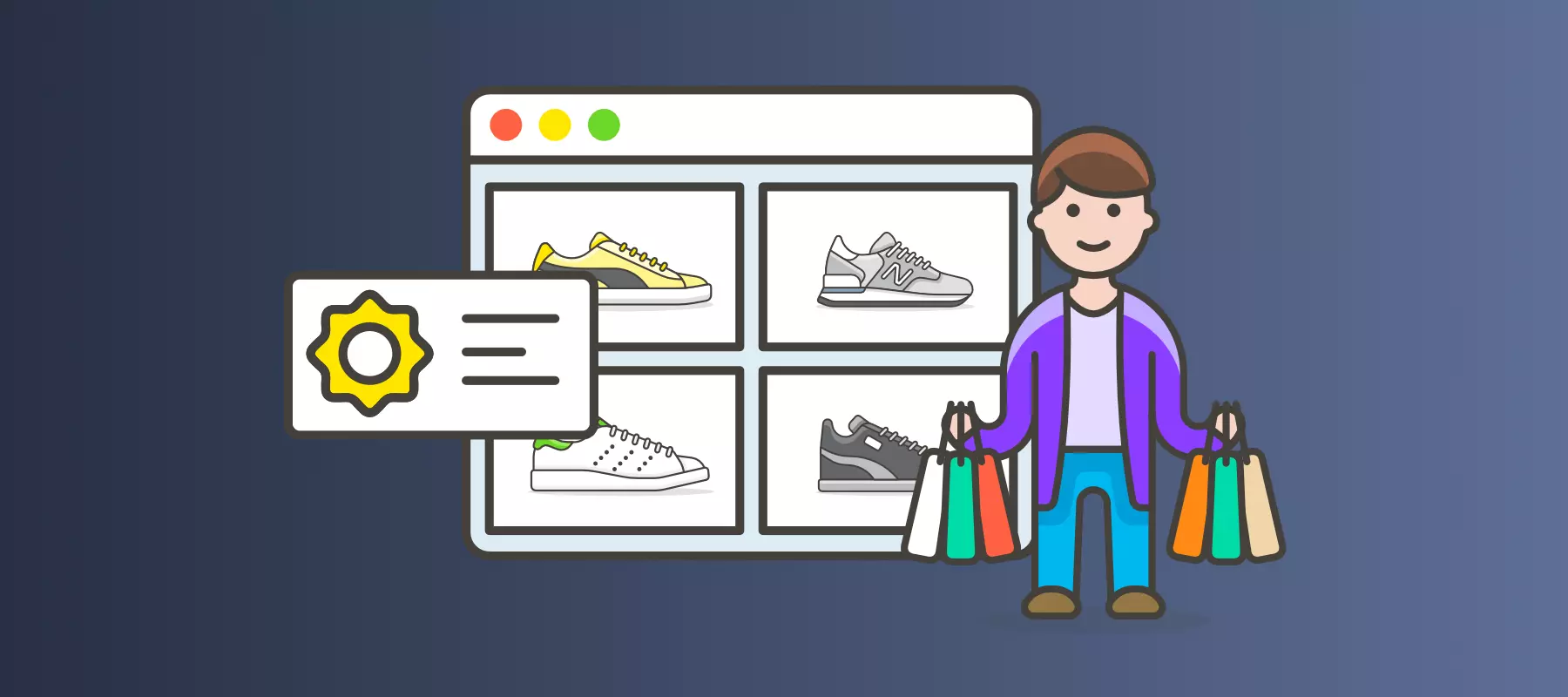Humanize Digital Customer Experience
Published: Jul 20th 2021 | 8 min read

Digital transformation is a central component in the digital world, and digital experience will account for far more interactions in the future than we encounter now. We delegate tasks to devices, applications, and systems, we find ourselves in the middle of chatbots, AI, IoT, ML …
According to McKinsey Global Institute, data-driven organizations are 23 times more likely to acquire customers, 6 times as likely to retain customers, and 19 times as likely to be profitable as a result.
Even with all the connections, it seems to be harder to balance the right customer experience. Fortunately, more companies realize that digital transformation is not equal to customer experience. Appealing to your customers’ emotions in an authentic way contributes to building long-term relationships.
What is humanization?
Humanization (or anthropomorphism) is putting a face to a brand and attributing human-like qualities, such as empathy. It adds the human element across all stages of the customer journey and product lifecycle. This enables businesses to connect with customers and delivers key benefits:
- Enhanced customer experience – customers are interested in connecting with your brand and want to identify common values. Mainly younger generations, for example, millennials, seek to know what your brand stands for.
- Increased satisfaction, retention, loyalty – positive experience builds trust and creates returning customers, eventually making your brand their first choice.
Take your time to know your customers
Traditionally, marketing involves segmenting people collectively into groups, based on static information e.g., age, gender, zip code. However, if you think about yourself personally, do you have the same interest, opinions, or preferred communication channel as most of your peers or neighbors?
A retail company segments customers for their advertisement on a video streaming platform based on stereotypes. Therefore, I keep seeing ads for kids’ nutrition or a new revolutionary stroller, despite the fact I have no children. This company placed me in a segment group based on my demographics when they should learn more about my interests. Resulting in wasted resources and a very ineffective campaign.
In such oversaturated online market, personalization is inevitable in retaining lasting loyal customers. Try to learn more about your audience, understand them, invest time into more sophisticated customer insights solutions or just simply ask them what they like.
Make Customer-Centric Approach a priority
To become a customer-centric business, your customers are literally in the center of your strategies, throughout their entire journey and after the purchase as well. The first step is to define all the touchpoints and focus on the unified communication (marketing and support).
Data density for better customer journey tracking
An important part of delivering a great customer experience is keeping up with your customer’s journey. To become memorable, you need to keep up. A key part of increasing the accuracy of insights and improving relevancy is data density. The more data you collect the richer you want them to be. It can help you know your customers more deeply, including the type of interactions and their behavior during all of them.
Example: A customer goes on a vacation, spends there a week relaxing. After they return back home and continue their standard internet browsing, they keep seeing the same advertisement for the resort they already went to. What is the chance they will take the exact same holidays and even in a near future? The customer's recent purchase demonstrates a lack of data density, the company is not keeping up. Instead, the company should use this information and recommend different destinations, new exciting adventures, or for example, a weekend getaway nearby.
Embedding the human component means focusing on long-term relationships and on true partnerships with your customers. That is more influential and more durable. To become a partner, you might need to modify your mindset. Replace the immediate sales goals of the past with proactive interactions that align with the goals that customers have for themselves. Simply put, shift your thinking away from achieving your goals to supporting customers in achieving their goals.
Don’ be afraid to just ask
Remember to incorporate a customer feedback loop to keep the continuous improvement. When you create a 360 view of your customer, you are provided with broad information that you can use to enhance their experience.
Although there are many things on the checklist to accomplish before becoming customer-centric, you can start small.
Harmonize digital and human elements
Full integration of human and digital parts can be time-consuming but very impactful. It drives sales, and it is vital in oversaturated markets. Remember that the customers are people in the first place.
Consolidating Artificial Intelligence (AI) into your customer experience process allows you to have a deeper understanding of the individual customer. Yet, it lacks the flair in the activity, that humans feel to satisfy the needs; and overuse of AI can have the opposite effect. One of the good practices is to identify key areas to balance AI-based support and human support. Automate the predictive, common, or easy areas and provide human support for complex or difficult situations.
Generally, make sure your service values are provided the way humans can feel. For example, communicating stories your customer can relate to can make a huge difference. Use the data for the insight and add a personal touch to otherwise impersonal messages to expand the experience.

Anticipate customers’ need
Most customers are not 100% sure what exactly they want nor they want to explain what they seek. Successful businesses know their customers and foresee their needs in advance. They make continuous changes to their products or services to match the demand and proactively provide personalized recommendations. All of it must be supported by relevant data and communicated the way, customers can absorb and make the most of it. Adapt business strategy to customers’ preferences and revolve around their experience.
One of the examples can be looking for the next problem to solve for them, instead of looking at what next product you need to sell.
Instead of just sending an automated email of booking confirmation, be creating and show you care, for example, let the customer know you appreciate they travel with their family or ease their stress of forgetting something by informing them about your little shop.

A combination of a good knowledge of customers‘ needs, problems, and where are they on their customer journey, together with understanding your product portfolio, delivers great results. Then the WOW effect comes.
Tie it with a big bow
A customer-centric approach with full data density lays the foundation for creative action. Real-time and AI-driven then build on them and make it happen for you. Connected experiences tie everything together to humanize the digital customer experience. It all comes down to the situations, where the customers actually get to experience the benefits.
For VIP customers, a hotel brand usually presents some welcome packages upon their arrival in one of their hotels, with a card saying: “Thank you for being our VIP customer. Let us know, how we can make your stay perfect”. Instead, you can use their information from the previous stay, build personalized gifts and say: “Welcome again! Your gym towel is ready, the yoga classes start at 7 am, and your favorite Pinot Noir is waiting for you in the fridge. Cheers.”

Connected experiences are the ability to connect with your customer on their multi-device, multi-channel journey, in the digital and physical world and provide a seamless and continuous experience.
Final example: As a platinum customer with a hotel brand, my check-in at one of their hotels in a new location is not limited to “Thank you for being a platinum customer, which newspaper would you like?” Rather, “Your gym towel is in your room, the Wi-Fi code has been enabled for your devices, your favorite Pinot Noir will be brought up to the room, and we have an opening for a massage between 8 pm and 9 pm. Shall I book you in?” Bottoms up!
Summary
"The essential difference in service is not machines or 'things.' The essential difference are minds, hearts, spirits and souls." - founder of Southwest Airlines, Herb Kelleher
Balancing user-focused technology and highly personalized human connection let you truly drive emotional engagement with your customers. A humanized customer experience begins with understanding the emotions of your customers and providing individual-level services. By considering and implementing the feedback and keeping a customer-centric attitude, or planning your marketing based on customer behavior, you can deliver the seamless experience your customers want with a genuine human touch. Remember, connected experiences nourish long-term customer relationships and build loyalty. And nonetheless, it all helps to grow NPS and long-term customer value.



